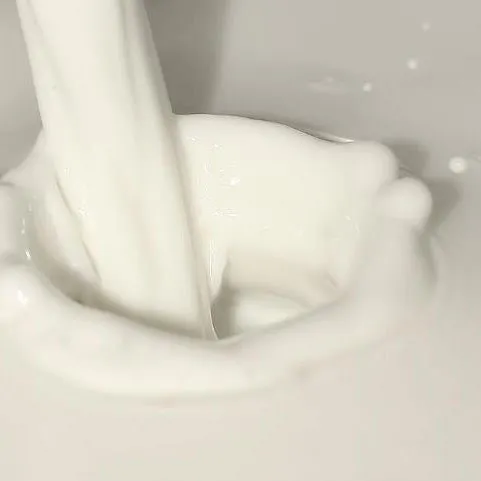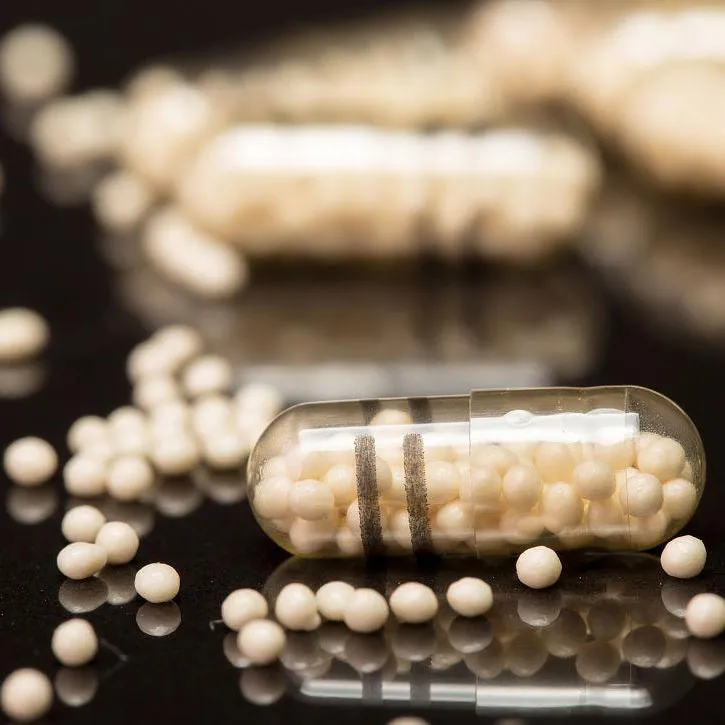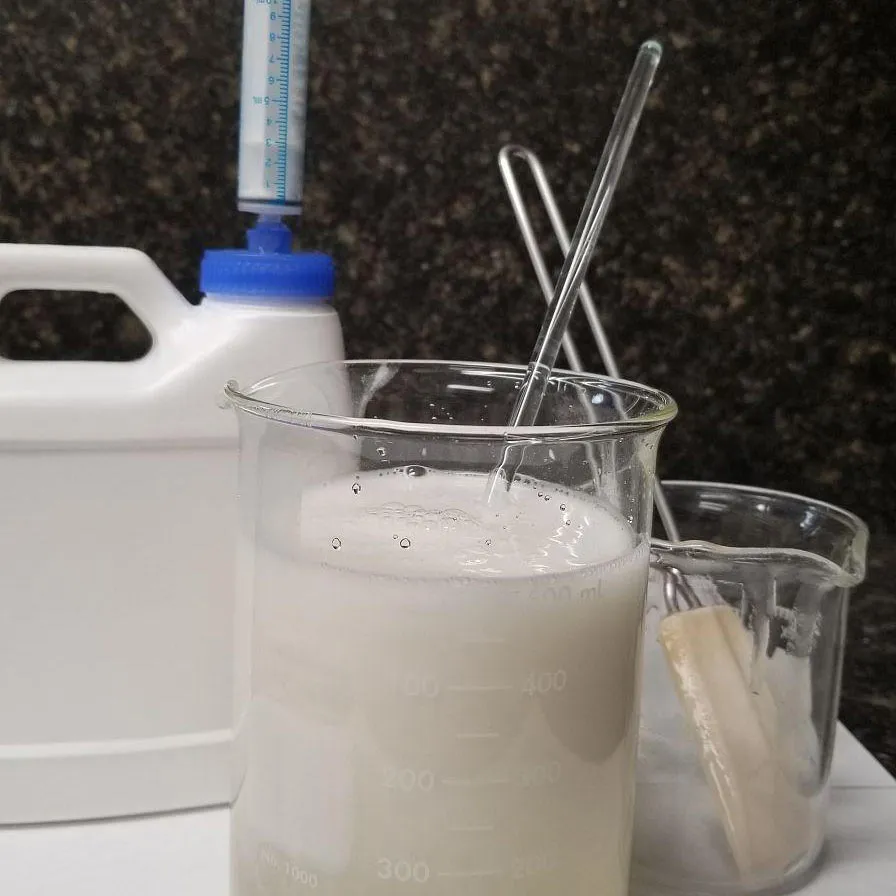
Ethylcellulose Aqueous Dispersion: Stable, Versatile Coating Solution
Understanding Ethylcellulose Aqueous Dispersion in Modern Industries
In the specialized world of industrial polymers and coatings, Ethylcellulose Aqueous Dispersion stands out as a versatile and high-performance material. This advanced polymer formulation is critical for a multitude of applications, offering unparalleled benefits ranging from controlled release in pharmaceuticals to durable film-forming in food and industrial coatings. Its non-ionic nature, excellent film-forming properties, and robust stability make it an indispensable component for manufacturers aiming to enhance product efficacy, safety, and longevity. The current industry trend shows a clear shift towards sustainable and water-based solutions, positioning ethylcellulose dispersions at the forefront of innovation. This move is driven by increasingly stringent environmental regulations and a growing consumer demand for safer, eco-friendlier products across sectors like pharmaceuticals, food technology, and specialty chemicals.
The technological advancements in polymer science have significantly refined the manufacturing processes for Ethylcellulose Aqueous Dispersion, enabling tighter control over particle size, viscosity, and solids content. These improvements directly translate into more consistent and predictable performance in end-user applications. Furthermore, the global market for such specialized excipients and binders is experiencing steady growth, fueled by the expansion of the pharmaceutical market, particularly in oral solid dosage forms, and the rising demand for effective barrier coatings in the food packaging sector. Manufacturers are continually seeking high-purity, stable, and easy-to-handle dispersions to streamline their production processes and achieve superior product characteristics, making detailed technical understanding of this material paramount for procurement and R&D teams.
Manufacturing Process and Quality Assurance
The production of high-quality Ethylcellulose Aqueous Dispersion involves a sophisticated multi-stage process designed to ensure homogeneity, stability, and optimal performance characteristics. Typically, the process begins with the dissolution of ethylcellulose polymer in an organic solvent, forming a viscous solution. This solution is then emulsified into deionized water using a high-shear mixer in the presence of suitable plasticizers and stabilizing surfactants. The emulsification step is critical for achieving a uniform particle size distribution, which directly impacts the film-forming properties and coating efficacy of the final dispersion. Subsequent stages involve the removal of the organic solvent through distillation or evaporation, resulting in a stable, milky-white aqueous dispersion of ethylcellulose particles. Rigorous process control is maintained throughout to prevent aggregation and ensure consistent product quality, especially regarding solids content and viscosity.

Quality control is paramount for Ethylcellulose Aqueous Dispersion. Manufacturers adhere to strict international standards such as ISO 9001 for quality management systems, ensuring that every batch meets stringent specifications. For pharmaceutical and food-grade dispersions, compliance with Good Manufacturing Practices (GMP) and relevant pharmacopoeial standards (e.g., USP, EP) is mandatory. Key inspection parameters include particle size distribution (often analyzed by dynamic light scattering), viscosity (measured by Brookfield viscometer), solids content, pH, minimum film-forming temperature (MFFT), and microbial limits. These rigorous checks guarantee the material's suitability for sensitive applications, ensuring a long shelf life, typically ranging from 12 to 24 months when stored under recommended conditions. The precision in manufacturing and adherence to these standards enable its wide use in industries requiring high consistency and reliability.
Key Technical Parameters and Advantages
The performance of Ethylcellulose Aqueous Dispersion is defined by a range of critical technical parameters that dictate its suitability for specific applications. Understanding these specifications is essential for engineers and product developers. Below is a representative table outlining typical parameters for a high-grade ethylcellulose dispersion. These values can vary slightly depending on the specific product grade and intended use, but they provide a baseline for expected performance and quality.
| Parameter | Typical Value Range | Measurement Method / Standard |
|---|---|---|
| Solids Content | 28.0% - 31.0% | Gravimetric analysis (drying oven) |
| Viscosity (Brookfield, 25°C) | 10 - 50 mPa·s | USP / EP 2.2.10 |
| pH (at 25°C) | 4.0 - 5.5 | Electrometric method |
| Particle Size (D50) | 0.1 - 0.3 µm | Dynamic Light Scattering (DLS) |
| Minimum Film-Forming Temp (MFFT) | ~15°C (plasticized) | ASTM D2354 |
| Residue on Ignition | ≤ 0.5% | USP |

The technical advantages of using Ethylcellulose Aqueous Dispersion are substantial. Its primary benefit lies in its ability to form durable, water-insoluble, and flexible films upon drying, making it ideal for moisture barrier coatings and controlled-release applications. Unlike solvent-based systems, aqueous dispersions eliminate the need for flammable and volatile organic compounds (VOCs), contributing to safer manufacturing environments and reduced environmental impact. Furthermore, ethylcellulose films exhibit excellent chemical resistance, heat stability, and taste-masking capabilities, crucial for pharmaceutical products. These properties translate into enhanced product stability, extended shelf life, and improved patient compliance due to better sensory attributes. The low viscosity at high solids content also allows for efficient spraying and coating processes, optimizing production efficiency and cost-effectiveness for manufacturers.
Diverse Application Scenarios and Custom Solutions
Ethylcellulose Aqueous Dispersion finds extensive utility across various high-value industries due to its multifaceted properties. In the pharmaceutical sector, it is a cornerstone for controlled-release drug formulations, enabling once-daily dosing and improving patient adherence. It is also widely used for taste masking of bitter active pharmaceutical ingredients (APIs) and for protecting hygroscopic drugs from moisture. Beyond pharmaceuticals, in the food industry, it serves as an effective barrier coating for nutritional supplements, candies, and dried fruits, preventing moisture uptake, extending shelf life, and enhancing appearance. Its use in agricultural chemicals, such as controlled-release fertilizers and pesticides, minimizes environmental runoff and maximizes efficacy over time. The versatility of this dispersion underscores its critical role in modern product development, enabling advanced functionalities that traditional materials cannot provide.

Recognizing that standard formulations may not always meet unique project specifications, leading manufacturers offer highly customizable solutions for Ethylcellulose Aqueous Dispersion. Customization options often include adjusting solids content, viscosity, and specific plasticizer ratios to achieve desired film properties, coating thickness, and drying times. For instance, a customer requiring a faster-drying coating for a high-volume production line might need a dispersion with a higher MFFT and lower viscosity, while another needing maximum moisture barrier might opt for a higher solids content. Collaboration with technical experts allows for fine-tuning these parameters, ensuring optimal performance in specific coating equipment and under varied environmental conditions. This tailored approach helps clients achieve precise functional outcomes, from specific release profiles for drugs to enhanced gloss and protection for industrial components.
Manufacturer Comparison and Trustworthiness
When selecting a supplier for Ethylcellulose Aqueous Dispersion, it's crucial to evaluate manufacturers based on not just product specifications but also their commitment to quality, technical support, and logistical efficiency. Leading suppliers differentiate themselves through adherence to global regulatory standards like FDA (Food and Drug Administration) guidelines for excipients and ISO certifications, which indicate robust quality management systems. Companies with extensive experience and a proven track record of successful client partnerships in diverse industries typically offer superior technical assistance, including application guidance and troubleshooting. They also tend to have established supply chains, ensuring consistent product availability and reliable delivery schedules, critical for uninterrupted production lines. This level of reliability builds trust and reduces operational risks for purchasers.

Frequently Asked Questions (FAQ)
-
Q: Is Ethylcellulose Aqueous Dispersion safe for food contact applications?
A: Yes, specific grades are manufactured to meet food-grade standards (e.g., FDA 21 CFR 172.870) and are safe for direct and indirect food contact as a coating or binder. Always verify the specific product's certification. -
Q: What is the typical shelf life and storage condition?
A: Typically 12-24 months from the manufacturing date when stored in original, unopened container111s at temperatures between 5°C and 30°C, away from direct sunlight and freezing conditions. -
Q: How does this dispersion impact coating equipment maintenance?
A: Being water-based, it generally leads to easier cleanup and less wear on equipment compared to solvent-based systems, reducing maintenance costs and downtime.
Regarding delivery cycles and quality assurance, reputable suppliers often provide detailed lead times, typically ranging from 2-4 weeks for standard orders, with expedited options available for urgent needs. Comprehensive Certificates of Analysis (CoA) accompany every batch, detailing key parameters and confirming compliance with specifications. Furthermore, a robust quality assurance framework, often including a multi-year warranty against manufacturing defects and dedicated technical support teams, ensures client peace of mind and fosters long-term partnerships. This commitment to post-sales support significantly enhances the trustworthiness of a supplier of Ethylcellulose Aqueous Dispersion.
Application Case Studies and Future Outlook
The practical application of Ethylcellulose Aqueous Dispersion across various industries highlights its transformative potential. For instance, in a recent pharmaceutical project, a leading drug manufacturer successfully reformulated an extended-release tablet using ethylcellulose dispersion, achieving a desired 24-hour drug release profile that significantly improved patient compliance and reduced dosing frequency. This case demonstrated the material's precise control over dissolution rates and its robust film integrity under physiological conditions. Another compelling example comes from the confectionery industry, where a producer of sugar-free chewing gum utilized the dispersion to create a moisture-protective barrier, preventing stickiness and extending the product's crispness, which directly led to increased consumer satisfaction and market share. These real-world successes underscore the material's versatile performance and economic benefits.
The future outlook for Ethylcellulose Aqueous Dispersion remains highly promising. Continued research and development efforts are focused on creating even more specialized grades with enhanced functionalities, such as improved adhesion to challenging substrates or higher flexibility for specific coating applications. Innovations in manufacturing processes are also targeting greater energy efficiency and reduced environmental footprint, aligning with global sustainability goals. As industries continue to seek high-performance, environmentally responsible, and cost-effective solutions for film-forming, binding, and controlled release, ethylcellulose dispersions are poised to remain a critical ingredient, driving advancements in product formulation and delivery systems worldwide. This ongoing evolution ensures its relevance and value in emerging markets and next-generation products.
References:
- Rowe, R. C., Sheskey, P. J., & Quinn, M. E. (Eds.). (2009). Handbook of Pharmaceutical Excipients. Pharmaceutical Press.
- USP-NF (United States Pharmacopeia–National Formulary). Latest Edition.
- European Pharmacopoeia (Ph. Eur.). Latest Edition.
- FDA CFR Title 21 - Food and Drugs.
- Thakkar, J., & Patel, V. (2018). Ethylcellulose: A Versatile Polymer for Pharmaceutical Applications. Journal of Drug Delivery Science and Technology.
-
Reliable Powdered Cellulose Supplier: Quality, Sustainability & InnovationNewsNov.24,2025
-
Find Trusted Microfibrillated Cellulose Suppliers for Sustainable Industrial SolutionsNewsNov.24,2025
-
Leading Methocel Suppliers: Quality, Innovation & Sustainability in Methylcellulose SupplyNewsNov.23,2025
-
Reliable Hydroxyethylcellulose Suppliers for Industry & Sustainability | Tangzhi HPMCNewsNov.23,2025
-
Top Ethyl Cellulose Supplier – Quality, Sustainability, and Industrial SupportNewsNov.23,2025
-
Trusted CMC Powder Suppliers for Food, Pharma & Industrial Use | Tangzhi HPMCNewsNov.22,2025





















